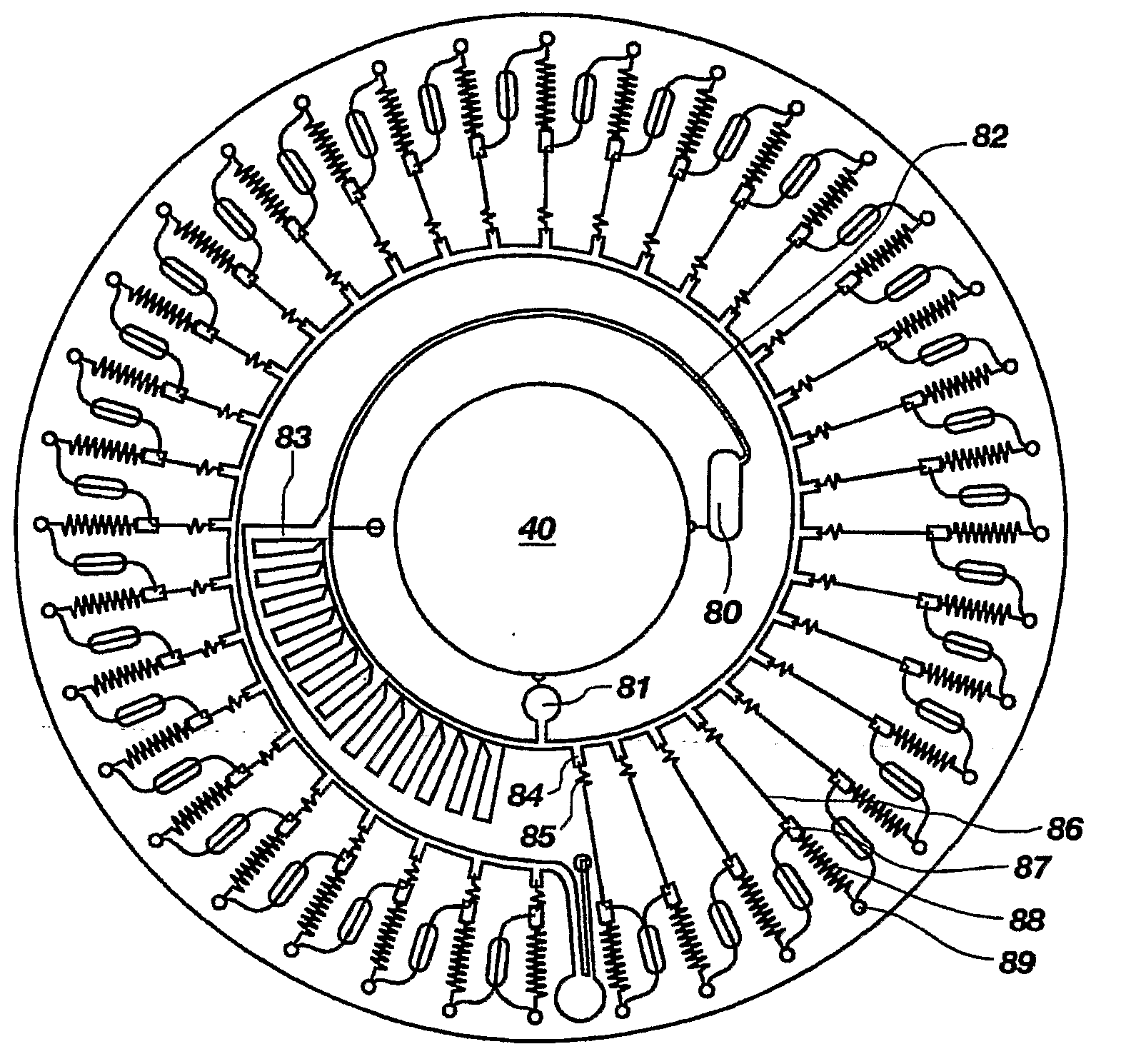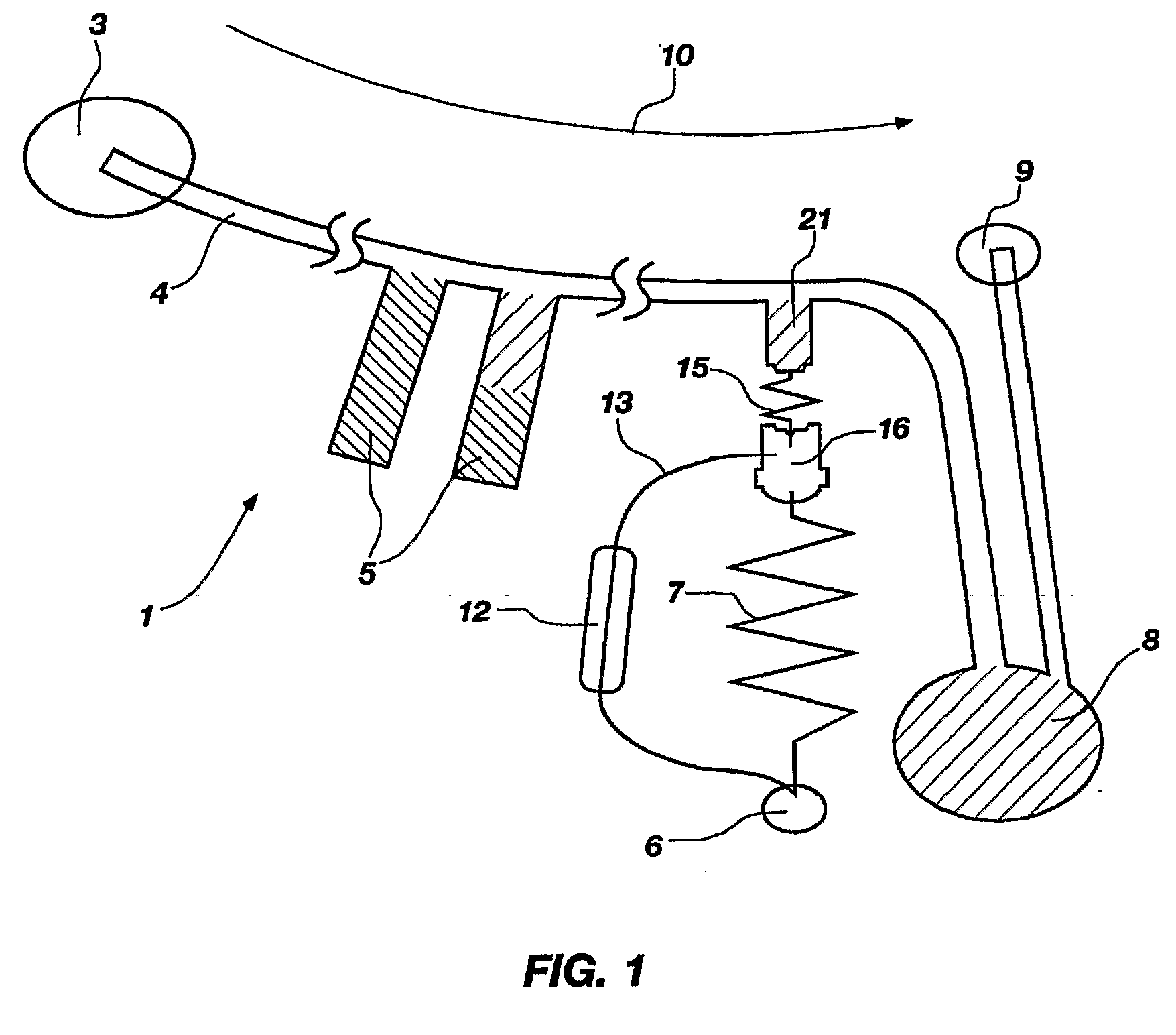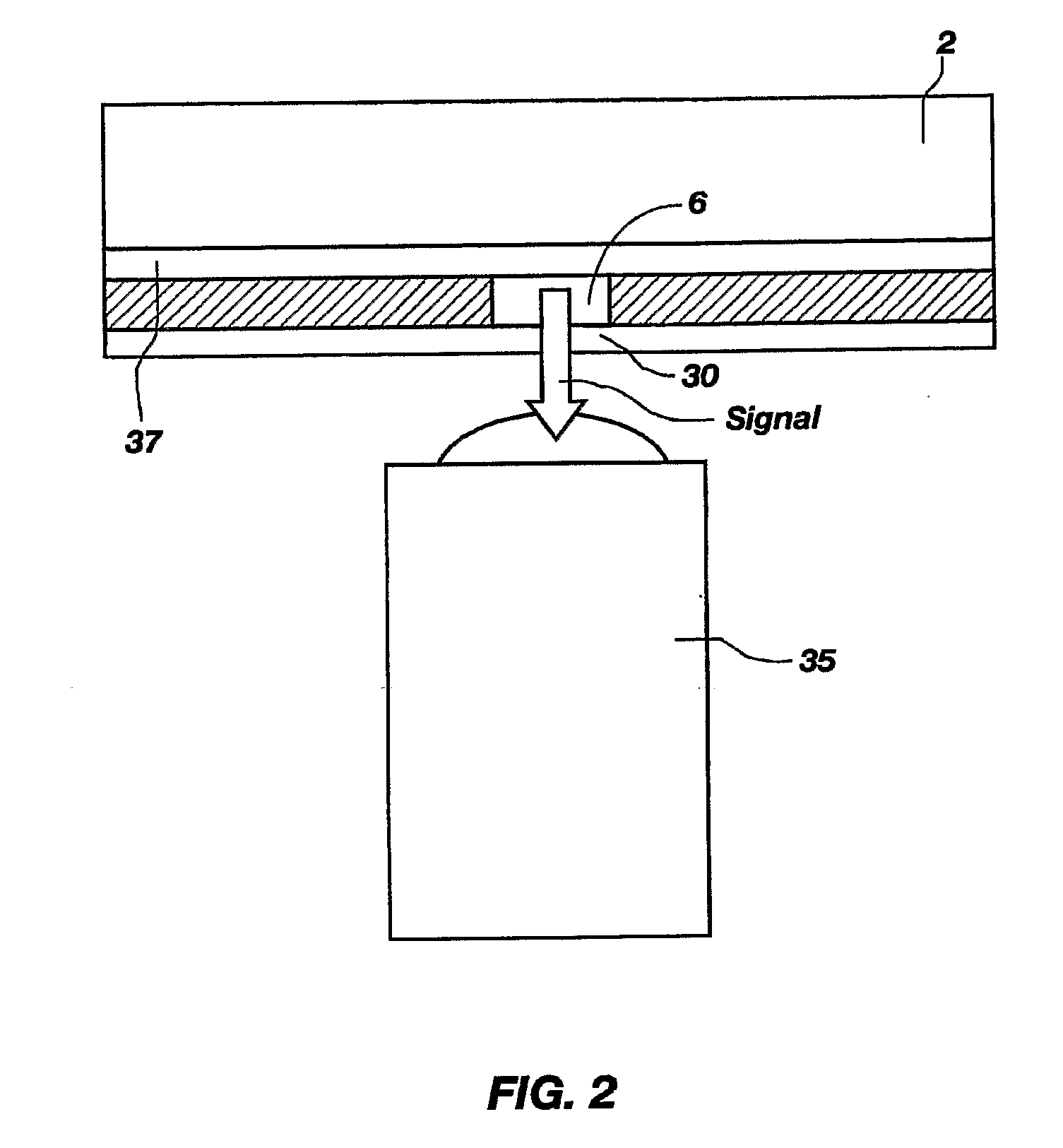Bioluminescence-based sensor with centrifugal separation and enhanced light collection
a luminescent sensor and centrifugal separation technology, applied in the field of point of care (poc) luminescent sensors, can solve the problems of not finding great commercial applicability of luminescence detectors and/or sensors in the poc, still requiring milliliter sample volumes, and requiring patients' health car
- Summary
- Abstract
- Description
- Claims
- Application Information
AI Technical Summary
Benefits of technology
Problems solved by technology
Method used
Image
Examples
examples
Fabrication of Embodiment of the Present Invention
[0091]An embodiment of a μTAS device of the present invention was microfabricated in an elastomer using “soft-lithography.” In an exemplary, non-limiting embodiment, bioluminescent detection assays for two model analyte solutions (galactose and lactate) will be stabilized in individual detection wells. An array of photo detectors was used to measure the luminescent signal from each analytical well. Sample delivery, rehydration and mixing where studied. Onboard calibration channels where cut into the platform. Blood and urine samples where tested.
[0092]The bioluminescent reagents were packaged in a stable form within the reaction wells without exposure to heat. Various microfabrication methods were tested for creating microfluidic and encapsulating them without the standard approached which involve heat and / or oxidation. The prototyping method also had to be convenient and rapid enough to be able to test a variety of sample delivery a...
PUM
| Property | Measurement | Unit |
|---|---|---|
| quantum efficiency | aaaaa | aaaaa |
| volumes | aaaaa | aaaaa |
| volumes | aaaaa | aaaaa |
Abstract
Description
Claims
Application Information
 Login to View More
Login to View More - R&D
- Intellectual Property
- Life Sciences
- Materials
- Tech Scout
- Unparalleled Data Quality
- Higher Quality Content
- 60% Fewer Hallucinations
Browse by: Latest US Patents, China's latest patents, Technical Efficacy Thesaurus, Application Domain, Technology Topic, Popular Technical Reports.
© 2025 PatSnap. All rights reserved.Legal|Privacy policy|Modern Slavery Act Transparency Statement|Sitemap|About US| Contact US: help@patsnap.com



